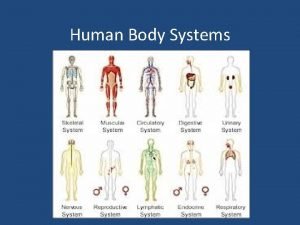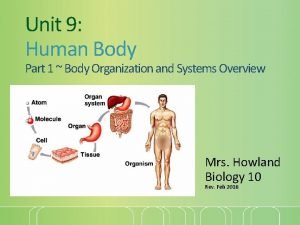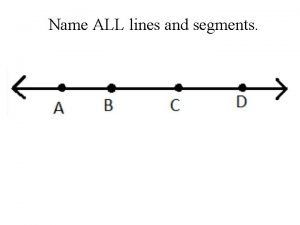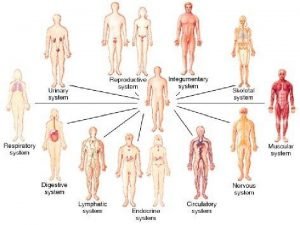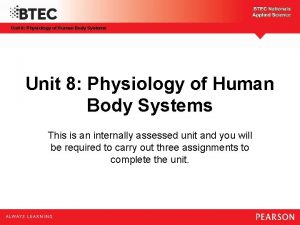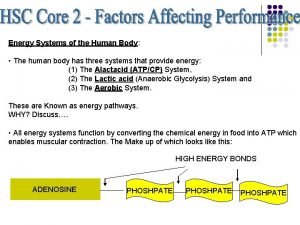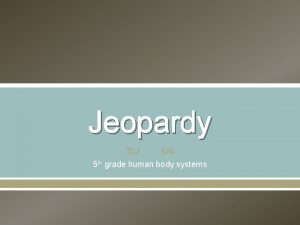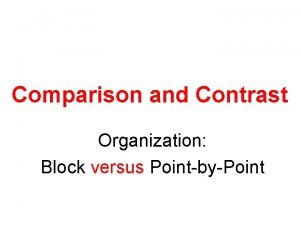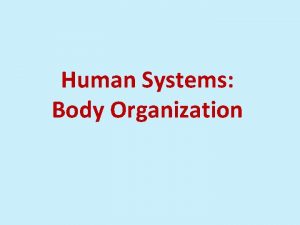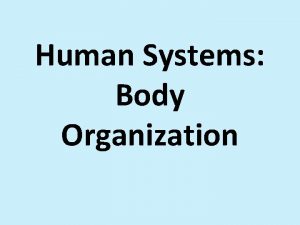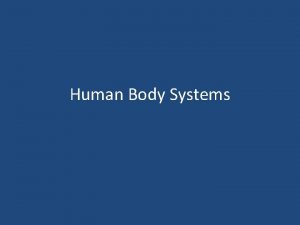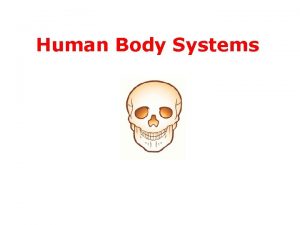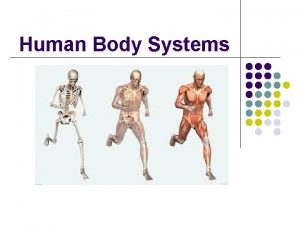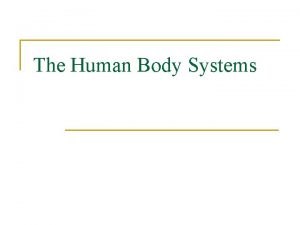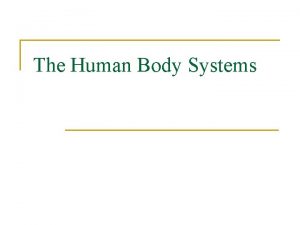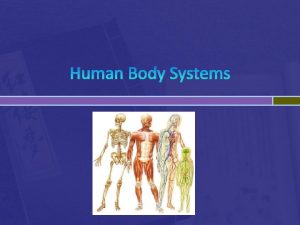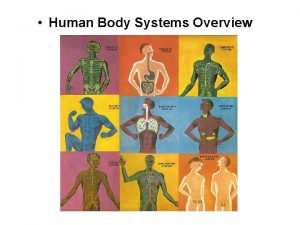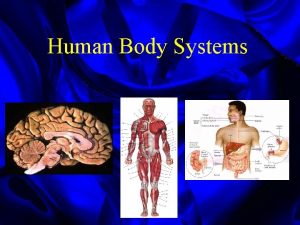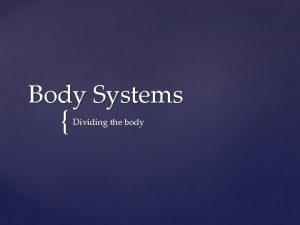Human Body Systems Organization of the Body All

Human Body Systems

Organization of the Body • All cells in the human body work both as independent units and as interdependent parts of the organism. • Levels of organization: cells – tissues- organs – organ systems • The eleven organ systems work together to maintain homeostasis in the body

11 Human Body Systems • • Nervous Integumentary Respiratory Digestive Excretory Skeletal Muscular • • Circulatory Endocrine Reproductive Lymphatic/Immune

Levels of Organization • Cells – the basic unit of structure and function in living things. – Specialized cells – suited to perform a particular function.

Tissues • a group of similar cells that perform a function in the body – Four basic types of tissue: epithelial, connective, nervous and muscle. • Epithelial tissue – convers interior and exterior body surfaces • Connective tissue – provides support for the body and connects its parts • Nervous tissue – transmits nerve impulses throughout the body • Muscle tissue – enables the body to move


Levels of Organization continued • Organs – a group of different types of tissues that work together to preform a function – Your eye is an organ made up of all 4 types to tissues, they all work together to allow us to see • Organ system – a group of organs that perform closely related functions. – Your brain (an organ) works with the rest of the nervous system to gather information and coordinate your body’s response

Homeostasis • Maintaining internal stability!!!!!! • Your body systems work together to make sure your internal conditions stay pretty constant even though the external environment changes

Feedback inhibition • This is a process in which a stimulus produces a response that opposes the original stimulus. • Maintaining a stable body temperature is an example of a feedback mechanism.

Nervous system • Structures: brain, spinal cord, peripheral nerves • Function: recognizes and coordinates the body’s response to changes in its internal and external environments

Integumentary System • Structures: skin, hair, nails sweat and oil organs • Function: serves as a barrier against infection and injury; helps to regulate body temperature; provides protection against ultraviolet radiation from the sun

Respiratory System • Structures: nose, pharynx, larynx, trachea, bronchioles, lungs • Function: provides oxygen needed for cellular respiration and removes excess carbon dioxide from the body

Digestive System • Structures: mouth, pharynx, esophagus, stomach, small and large intestines, rectum • Function: converts foods into simpler molecules that can be used by the cells of the body; absorbs food; eliminates wastes

Excretory System • Structures: skin, lungs, kidneys, ureters, urinary bladder, urethra • Function: eliminates waste products from the body in ways that maintain homeostasis

Skeletal System • Structures: bones cartilage ligaments, tendons • Function: supports the body; protects internal organs; allows movement; stores mineral reserves; provides a site for blood cell formation

Muscular System • Structures: skeletal muscle, smooth muscle, cardiac muscle • Function: works with the skeletal system to produce voluntary movement; helps to circulate blood and move food through the digestive system

Circulatory System • Structures: heart, blood vessels, blood • Function: brings oxygen, nutrients, and hormones to cells; fights infection; removes cell wastes; helps regulate body temperature

Endocrine System • Structures: hypothalamus, pituitary, thyroid, parathyroid, adrenals, pancreas, ovaries (females), testes (males) • Function: controls growth, development, and metabolism; maintains homeostasis

Reproductive System • Structures: males = testes, epididymis, vas deferens, urethra, and penis; females = ovaries, fallopian tubes (oviducts) uterus, vagina. • Function: produces reproductive cells; nurtures and protects developing embryo (females)

Lymphatic/Immune System • Structures: white blood cells, thymus, spleen, lymph notes, lymph vessels • Function: helps protect the body from disease; collects fluid lost from blood vessels and returns the fluid to the circulatory system
- Slides: 20
